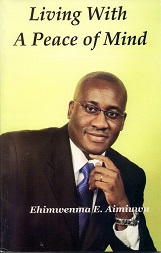 |
|
The Edo-speaking people of the old Benin Province
and parts of Delta, Rivers and Ondo province and patrs of Delta,Rivers and Ondo
Provinces belong to the Kwa language family groups of the Western Sudanic languages
like Yoruba,Igbira,Igala and Ibo. They are divided into four groups Edo (Bini)
Esan, Norhtern Edo and Urhobo and Isoko. The common typical characteristics of
the group are the types of rural settlement, the organization of the age-grade
system and a strong patriilineal bias in their social organization. There is
established chieftiancy with authority and the people are deeply religious.The
economy is based largely on farming, hunting and fishing but there is good craft
work especially among the Edo (Bini) where the guild system has been very well
developed.
With these characteristics in view the educational
system has been developed along the line which ahs produced men and women for
the right kind of services.
The educational of the child starts on the day
he is born because he is constantly been exposed to many of the customs which
pass into his subconscious mind. Among the Edos for example yams are placed on
the child´s head on the bed from the day of birth until the naming ceremony. This
seems to direct his mind to popular occupation and the staple food even when
he can hardly perceive. Among the Agbede clan it is the woman who first washed
the child at birth that will continue for the next three months. This must have
some pychological effect on the growing baby. The naming ceremony on the seventh
or eight day is an occasion to admit the child into the extended family system
as noted under the Chamba. Among some of the Edos the head of the infant is touched
to the ground seven times by the most senior woman present at the ceremony as
a token of his submission to the collective ancestors spirits. The child is introduced
to the society at the age of three months when the mother goes to public places
like the market with him or her on her back.What the child sees or hears at
this time forms the foundation of his education and is reflected in his behaviour
later in life.
For the first three years of it´s life the child
is almost entirely dependent on it´s mother until if is weaned and then he or
she can join the groups of his or her peers. This is why the Edos think that
growing girls must themselves be properly educated because of their role as
mothers in the life of the nation. The basis for counting, use of language, knowledge
of the customs and traditions is laid during this period. The young mother is
supposed to be the inexperienced class teacher and the maternal grandmother, the
headmistress of the small domestic kindergarten. |
|
The Political & Spiritual Purpose of the
Holy Land
 |
|
|
|
Once the child is circumcised at between three
and seven he graduates out of granny´s kindergarten class into the society´s
primary school where he improves his counting,number work,and the use of language
through running erands and joining his peer groups in different types of play.No
ceremony is attached to circumcision as with Chamba but it is obligatory for
every child .All children play and learn together until about six when each
sex begins to learn what should be useful to it later in life.boys begin to
paly with bows and arrows,matchets,fishing rods and also to use them properly
under experienced elders with appropriate use of praise and ridicule.Those Who
wish to specialize in particular crafts are attached to members of such guilds
who are relatives or friends of the family.
Girls do not belong to fixed play-groups but are
taught to prepare meals,carry fire wood and fetch water for domestic use until
they are about eleven when they are expected to have mastered the art of looking
after siblings and know something of trading and farming.Before menstraution
starts she would have learnt all the taboos connected with sleeping in a special
room,not touching cooking utensils,not entering any shrine. She receives sound
sex education which is denied girls nowadays.
|
|
|
By about the age of sixteen the young men are expected
to enter the age-grades in their village. These are the training colleges for
the youth and the adult, they enter the lowest grade as youth and retire from
the highest as elders. There are three important grades-the first is for the
youth, the second for mature men and the third for elders. They spend 5-7 years
in each grade depending on that locality.
The first stage is for the youth to become mature, to
serve the community in various capacities and to learn the secrets of most of
the customs and traditions which they would be expected to pass on.Their communal
tasks include the clearing of paths to farms, streams ,and other villages and
the care and repair of shrines and other public buildings. This is important
period in the life of any gifted youth for it is at this time that he can show
how brave he is through exploit, how gifted through accomplishments and how original
through suggested innovations.
|

Nigeria: House |
|
Adulthood is the stage of learnig by teaching others,of
dispensing justice equitably and assuming leadership in the various cults and
religious groups no less than in the fighting forces that sustained the Old
Benin Kingdom.
One particular area in which the genius of Edo
adults succeded in maintaining a high standard of education is the organization
of indigenous crafts in the Kingdom.it was left in the hands of guilds which
organized themselves in a remarkably efficient way.There were guilds of Blacksmith,wood
and ivory,Bronze,leather workers ,drum-makers ,weavers of special embroidered
cloths and bead decorators whos works still attest to a high level of civilization
which could not have been succesfully supported by the so-called present-day
education.
|
![]()